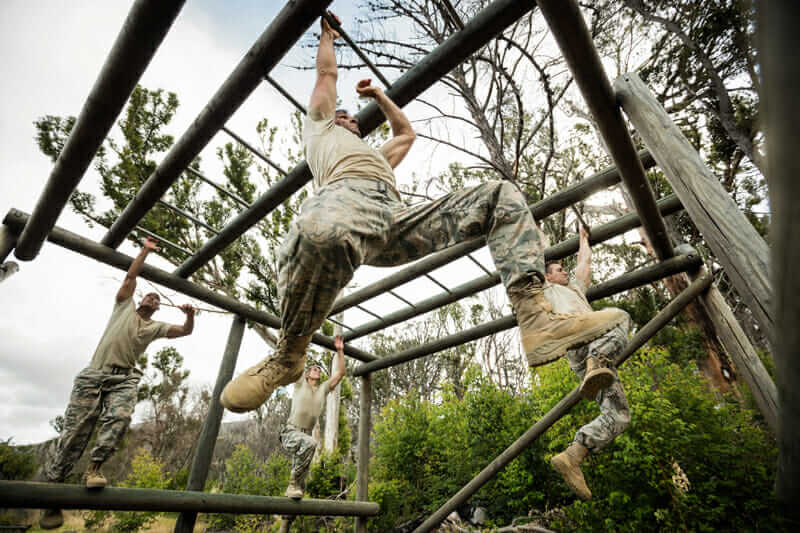Navy SEAL Training: The Crucible of Elite Warriors
Navy SEAL training is widely regarded as one of the most grueling military programs in the world, designed to transform ordinary individuals into extraordinary warriors. Known officially as Basic Underwater Demolition/SEAL (BUD/S) training, this six-month regimen pushes candidates to their physical, mental, and emotional limits. Only a small fraction of applicants emerge as Navy SEALs, with attrition rates often exceeding 80%. This article delves into the structure of the training, its defining challenges, and the psychological fortitude required to succeed. From the infamous "Hell Week" to the emphasis on teamwork under extreme stress, we explore how this program forges individuals capable of executing high-stakes missions in the most hostile environments on Earth.
The Phases of Navy SEAL Training
BUD/S is divided into three phases, each targeting specific skill sets. The First Phase focuses on physical conditioning, cold-water acclimatization, and basic combat diving. Candidates endure timed runs, ocean swims, and calisthenics while battling sleep deprivation. The Second Phase hones underwater competencies, including prolonged breath-hold drills and underwater navigation. The final Third Phase shifts to land warfare, teaching demolition, reconnaissance, and small-unit tactics. Throughout, trainees face constant performance evaluations. Failure to meet standards in any phase results in immediate dismissal, ensuring only the most adaptable and resilient progress.
Hell Week: The Ultimate Test of Endurance
Hell Week, occurring in the First Phase, is a five-day sleepless ordeal where candidates execute non-stop physical tasks under freezing conditions. Teams carry inflatable boats overhead for miles, perform open-ocean swims in 55°F water, and navigate obstacle courses caked in mud. The goal is to break down individualism and reveal who can lead—or follow—under collapse. Over 50% of dropouts occur here, often due to hypothermia, stress fractures, or sheer mental exhaustion. Those who survive gain an unshakable confidence in their ability to persevere, a cornerstone of SEAL operational philosophy.
The Role of Mental Resilience
While physical toughness is essential, psychological resilience separates survivors from the eliminated. Instructors employ calculated stress techniques to simulate combat chaos, forcing candidates to solve problems while exhausted, hungry, and cold. Techniques like "positive self-talk" and "compartmentalization" are critical for managing pain and fear. Trainees also learn to embrace discomfort, reframing it as a necessary step toward growth. This mindset, cultivated relentlessly during training, becomes vital in real-world missions where split-second decisions determine life or death.
Teamwork: The Foundation of SEAL Success
Navy SEALs operate in tight-knit teams, and training emphasizes collective survival over individual glory. Candidates are organized into boat crews, where failure by one member penalties the entire group. This fosters accountability and trust—key traits during operations requiring silent coordination, such as night raids or hostage rescues. Instructors deliberately create scenarios where teamwork is the only path to success, like navigating a capsized boat in rough surf. The message is clear: arrogance or selfishness jeopardizes missions, while humility and collaboration save lives.
Beyond BUD/S: The Making of a SEAL Operator
Graduating BUD/S is only the beginning. New SEALs advance to specialized training in parachuting, sniper tactics, or language skills. They join operational platoons, where mentorship from veteran SEALs sharpens their combat readiness. Real-world deployments then test their training under fire, whether conducting counterterrorism strikes or humanitarian missions. Despite the prestige, SEALs remain humble servants of their team and nation—a ethos rooted in the relentless trials of BUD/S.
Final Thoughts
Navy SEAL training is not merely a test of strength but a transformative journey that reshapes minds and forges unbreakable bonds. From the brutality of Hell Week to the precision of advanced combat training, every phase prepares candidates for the unpredictable demands of special operations. The program’s high attrition rate is intentional, ensuring only those who embody resilience, teamwork, and adaptability earn the SEAL trident. For those who succeed, the training becomes a lifelong foundation—proof that human potential, when honed by discipline and purpose, can overcome even the most impossible odds.
